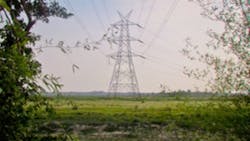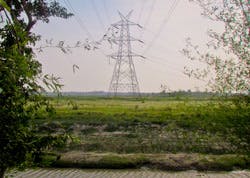India Electricity Flows to Bangladesh in First South Asian HVDC Cross-border Link
Electricity began to flow on October 5, 2013 from India to Bangladesh through a new transmission line, marking South Asia’s first-ever high voltage direct current (HVDC) interconnection between two countries and a key step forward in regional power sharing and cooperation.
“This groundbreaking link will help provide urgently needed power to Bangladesh. More importantly, it is a key milestone for South Asia as it looks to set up a regional energy market to make the best use of its diverse and unevenly distributed energy resources,” said Juan Miranda, Director General of Asian Development Bank’s (ADB) South Asia Department.
The transmission line will link the eastern electrical grid of India to the western grid of Bangladesh. Testing of the sub-station installations has been ongoing since early September but the interconnection will be in operation starting 5 October. The HVDC interconnection allows better control over power flows and improved stability on the two grids.
The interconnection on the Bangladesh side comprises a 500-MW HVDC substation at Bheramara, about 27 km in 400-kV transmission lines from Bheramara to the Indian border and a link to the Bangladesh electricity grid. ADB helped finance the $199 million interconnection facilities in Bangladesh with a $112 million loan. The Power Grid Corporation of India Limited built and financed the infrastructure in India.
Only about half of Bangladesh’s people have access to electricity, and those who do suffer from regular power outages lasting up to five hours a day in major cities. Expanding supply will help businesses and improve the delivery of essential services like education and healthcare. Buying electricity from India will also help gas-reliant Bangladesh diversify its energy sources and the link will later allow it to tap into energy resources from other parts of the region.
From 5 October, the trading arm of NTPC Ltd, India’s largest generating utility, will commence supply to the Bangladesh Power Development Board, the bulk supplier of electricity in Bangladesh, under a government-to-government contract. This will be increased to 250 MW in November 2013 and a further 250 MW will be added by the end of 2013. The project could eventually be scaled up to allow 1,000 MW of power flows.
The contracts will allow Bangladesh to buy power from India more cheaply than buying it from rental plants in Bangladesh. The cross-border trading also enables the two countries to trade electricity based on variations in their seasonal and weekly demand.
More cross-border energy links are currently being considered in South Asia, including on Bangladesh’s eastern borders. Such links, which already have support from South Asian governments, would promote greater trade and other cooperation within the region.

